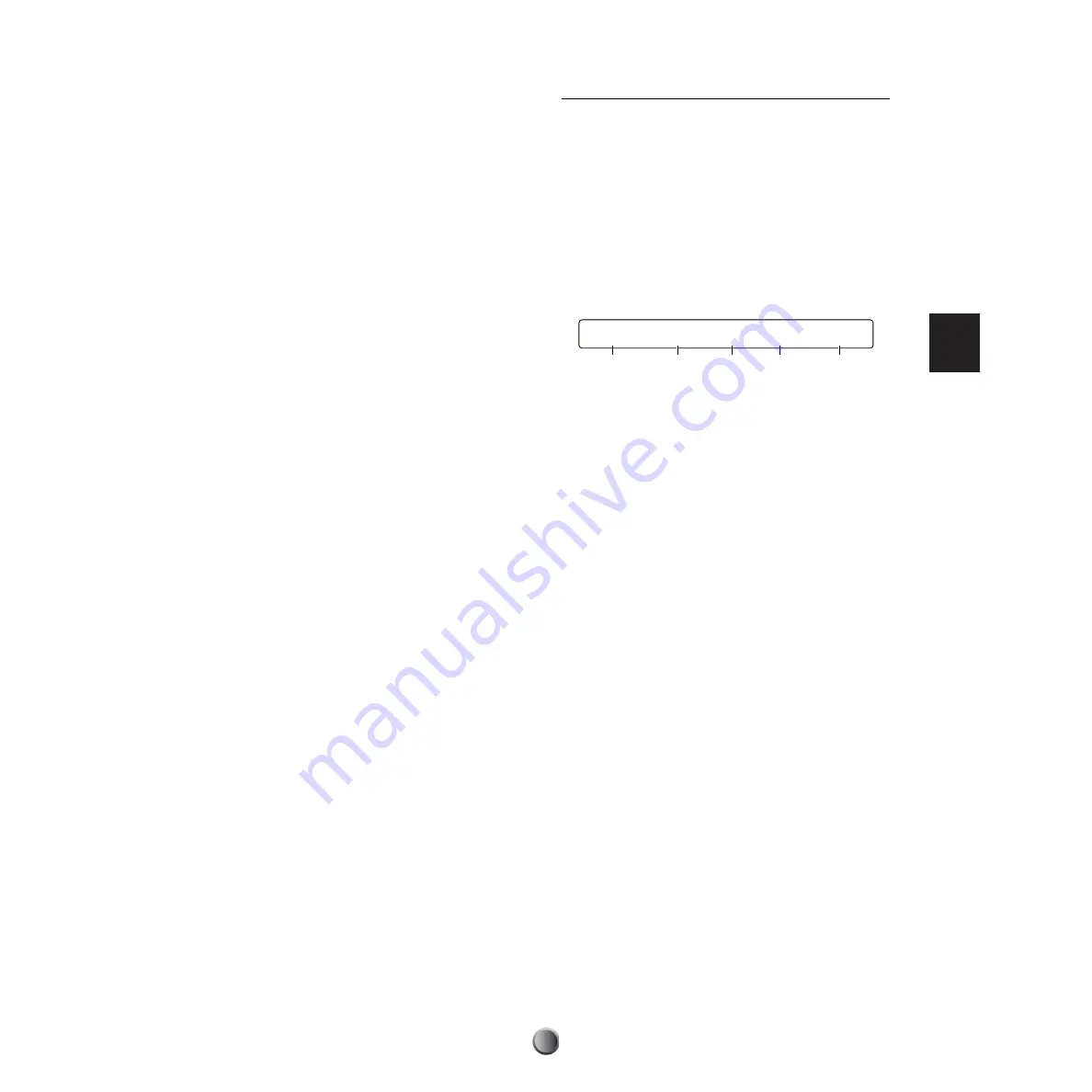
Edit Section
41
n
Withpad mode does not demand that you play a real open rimshot
(hitting the pad rim and head at the same time). It lets you play
both the pad and rim sounds by only hitting the rim.
3
TrgAltG
Specify the trigger alternate group number to which the target
input
1
belongs. If multiple trigger inputs are grouped with
the same number assigned, only one input from that group is
enabled at a time. As a result, hitting a pad from that group
will mute notes triggered by other pads in the same group.
This is useful to prevent an unnecessary stacking of notes.
❏
Settings:
off (not grouped, default), 1~32
n
This function works in conjunction with the RvKeyOff setting
(page 52) for a drum voice associated with the trigger input (by
MIDI note number). When a trigger input is enabled from a trigger
alternate group, other trigger inputs from the same group
respectively generate a MIDI note off event for the corresponding
MIDI note number. This note off event is then sent to the internal
tone generator and is used to mute a drum voice assigned to that
MIDI note number. If this voice is set to receive the Note Off event
(RvKeyOff=on), you can successfully mute its sound by the trigger
alternate group setting. Otherwise (RvKeyOff=off ), you cannot
mute it even though the Note Off event is generated and sent to the
tone generator.
4
RimVel
This parameter is available only when a rim (1R1 to 8R2) is
selected for the target input
1
, and determines how to
output the rim velocity. The “trigger level to velocity”
conversion (page 37) for the target input
1
is applied to all
settings other than the fix settings.
❏
Settings:
• mute hi: Outputs a velocity value according to how hard you hit
the rim. When you hit (hold) the rim with strength below a
certain level, a velocity value of zero is output and produces the
muting effect. Select this if you connect a cymbal pad to the
target input
1
.
• mute lo: Same as mute hi, but the muting sensitivity is lowered.
If you cannot easily get the muting effect with mute hi, select
this setting.
• variable: Outputs a velocity value according to how hard you hit
the rim. Select this if you connect a drum pad to the target input
1
.
• fix1~fix127: Outputs a fixed velocity value regardless of how
hard you hit the pad. However, you cannot use the muting
effect with one of these fixed values.
n
If you connect and specify an RHP-series real head pad to the target
input
1
, mute hi or mute lo for the rim velocity
4
will be shown
in brackets. This means the trigger input and the pad type do not
match, therefore the muting effect is disabled.
[TrgMIDI2] Note On Event
After you’ve specified how the trigger signal is converted into
a velocity value (page 38), and how to produce a triggered
sound (page 40), now go on to this page and specify the note
for that sound with its pitch and length (note number and
gate time), as well as the MIDI channel assignment. This
determines a specific MIDI Note On event (consisting of
channel, note number, and velocity) output when you hit a
pad. Again, in this page, you can specify up to nine notes
(including the basic note for a drum voice) according to the
specified Key On mode, up to two notes for rims, and an
optional note for muting respectively, by note number, gate
time, and MIDI channel.
1
Input=
Select a target trigger input (1 to 16).
2
Note
Select a target note (1st to 9th for an alternate mode, 1st to
6th for the stack mode), rim notes (rim1, rim2), or a mute
note.
When selecting the trigger input
1
notes are available for hi-hats instead of the 1st to 9th notes:
• open: For an open hi-hat sound by hitting the pad.
• clse: For a closed hi-hat sound by hitting the pad.
• fcls: For a foot-closed hi-hat sound.
• spls: For a foot-splashed hi-hat sound.
• clsRim: For a rim sound by hitting the pad while the hi-hat
pedal is depressed.
• opRim1: For a rim1 sound by hitting the pad while the hi-
hat pedal is released.
• opRim2: For a rim2 sound by hitting the pad while the hi-
hat pedal is released.
n
The mute note setting is a powerful performance feature that lets
you mute the sound played by the pad, simply by touching/hitting
the edge or rim. More than that, it also lets you play a second
sound. For example, you could perform a cymbal “choke” by
grabbing the edge of a cymbal pad — and at the same time have a
reverse cymbal or other sound play.
[TrgMIDI2] Note Note# GateTime Channel
Input=16 4th *88 E5 0.3s 10
1
4
5
3
2







































